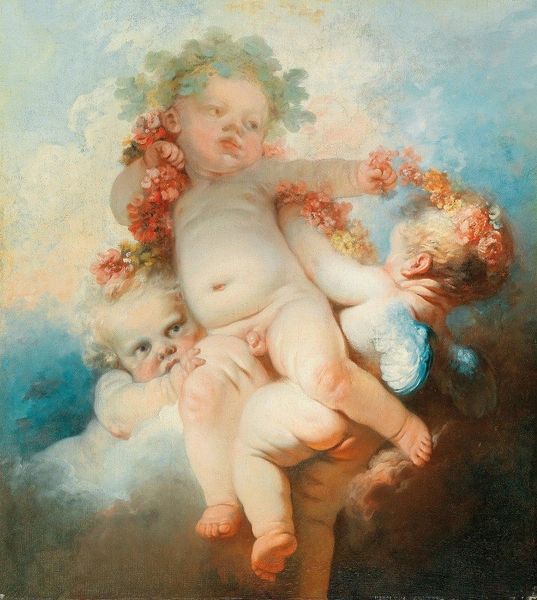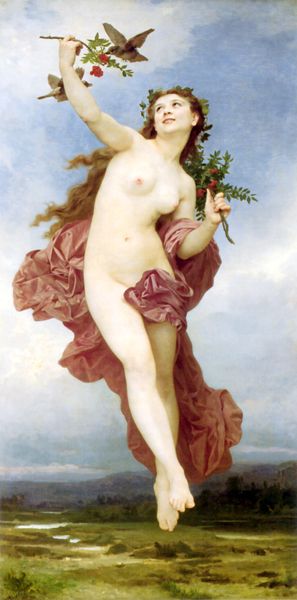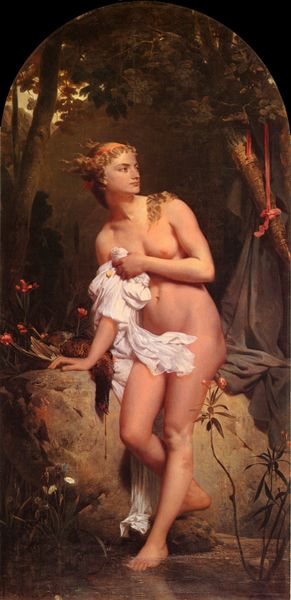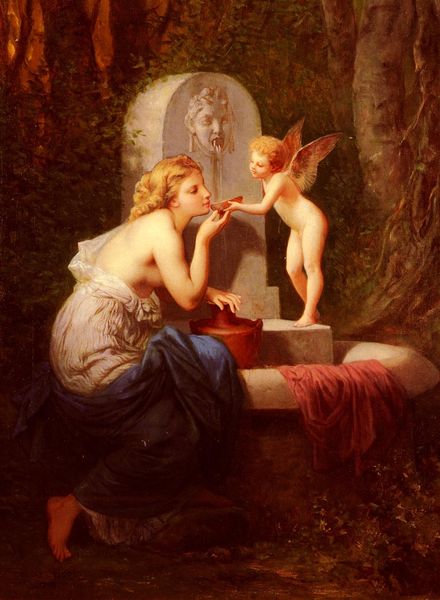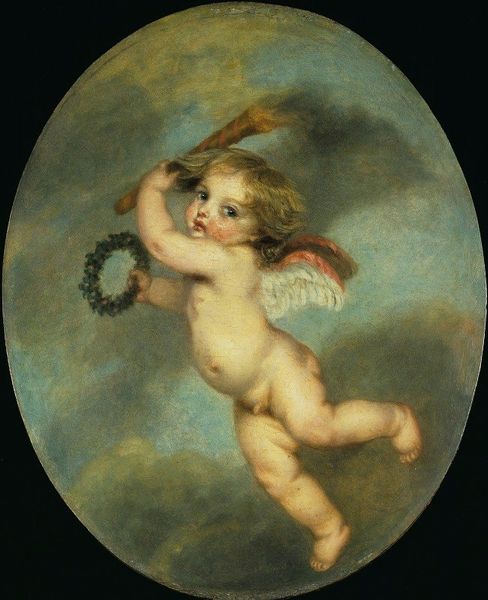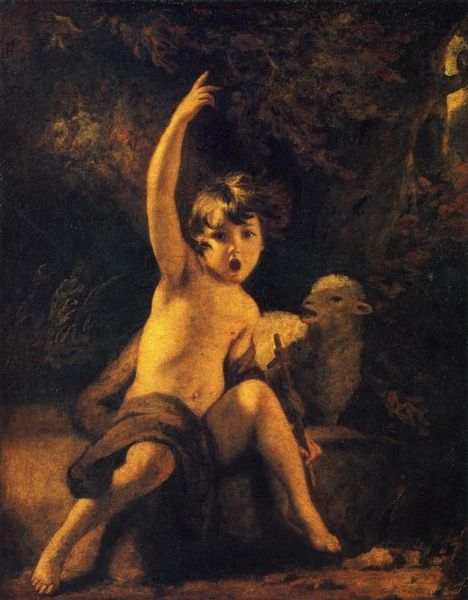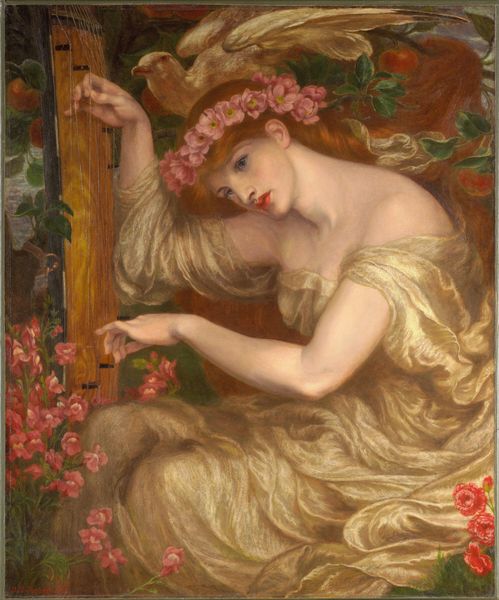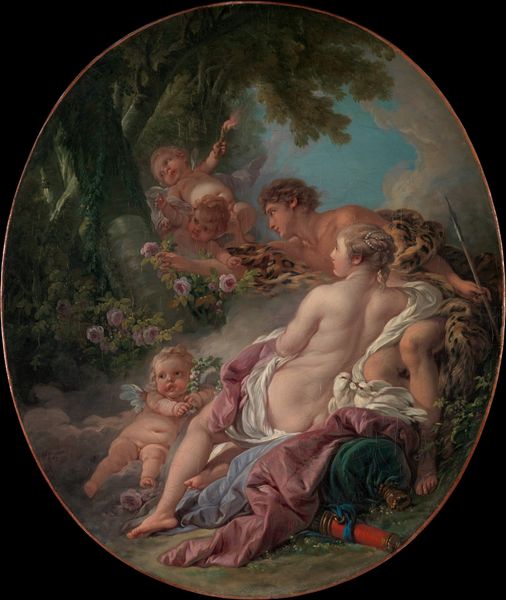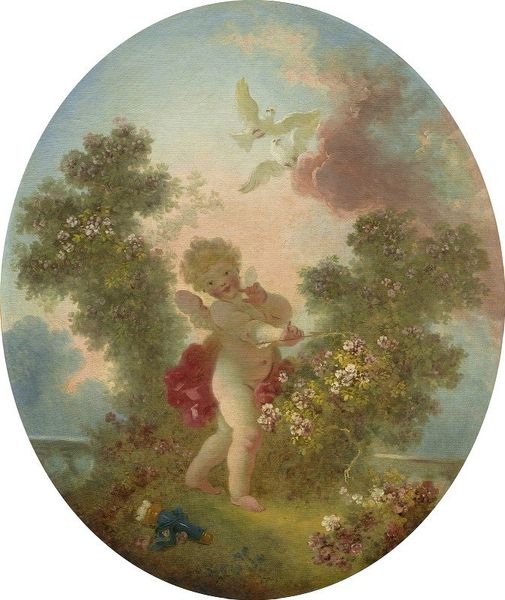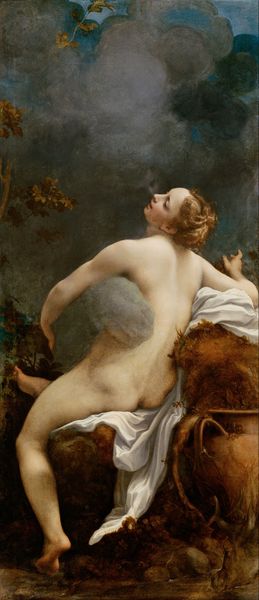
Copyright: Public Domain: Artvee
Jean-Honoré Fragonard painted ‘L’Amour triomphant’ in the late 18th century, a period defined by the reign of the French aristocracy. Here, Fragonard presents us with a vision of love as a triumphant force. Consider the implications of love and triumph being embodied by a cherubic figure, a symbol often associated with innocence and purity, while the institution of marriage remained a cornerstone of social and economic strategy. The work presents a putto, a chubby male child, with wings raising a wreath of flowers in victory. He stands atop a plinth and is surrounded by shrubbery that blocks an opening with a gate. Is the child cupid blocking the figures from true freedom? Fragonard invites us into a world where love is both playful and powerful, a narrative that perhaps served as an escape from the rigid social structures of his time. While the artwork is pretty, I am left wondering if love can truly triumph when it operates within such carefully constructed boundaries.
Comments
No comments
Be the first to comment and join the conversation on the ultimate creative platform.
